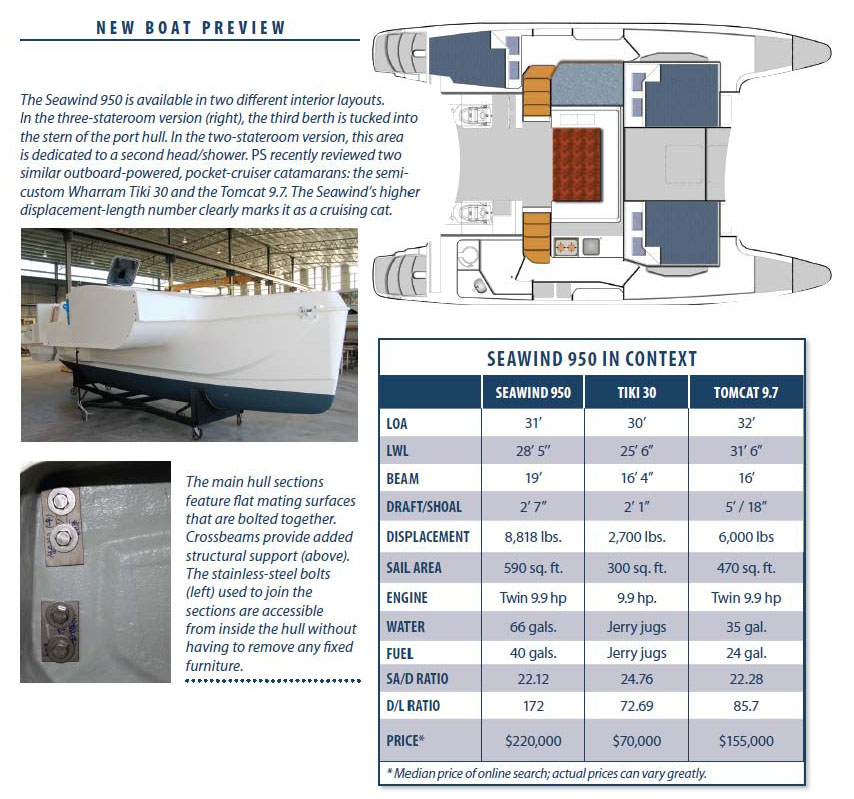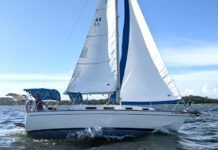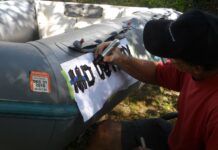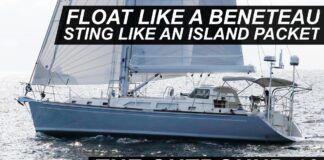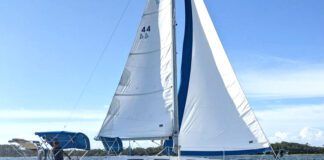Seawind Catamarans, Australias most successful sail-yacht builder, introduced its new Seawind 950 catamaran last May. Seawind, which recently bought trimaran-maker Corsair, has been building a range of catamarans-33-foot, 38-foot, and 41-foot-for a number of years. The design for the Seawind 950 has been in the works for about three years. One of its main objectives is to help propel Seawind back onto the world stage. The most original aspect of the 950 is that it can be delivered in two 40-foot containers and can be assembled by two people (with a forklift or crane) in less than two days, and ready to sail on coastal passages.
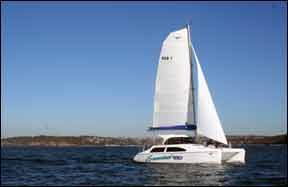
Photos courtesy of Seawind Yachts
A containerized yacht is not new: Back in the 1980s, Greg Young designed an 8.5-meter yacht with a lifting keel that could be packed into a 20-foot container. More recently, a number of packable Far Harbour 39s, designed by Bob Perry, have been sold (see PS, July 2007). But the Seawind appears to be the first cruising catamaran designed to be containerized.
The Seawind 950 was designed as an entry-level catamaran with a minimalist fit-out. The idea is to develop brand loyalty with a new, younger customer base. Additionally, the container concept allows the yacht to be delivered economically anywhere in the world with truck access. Equally important, the yacht can be de-rigged for reshipment for minimal cost.
For Seawind, this feature opens up everywhere from the Great Lakes to Lake Geneva as a possible market. For an owner who is tired of sailing the Caribbean and not too keen on an ocean passage, relocation is simplified. They can simply pack up and ship to the Mediterranean. The feature can also be an asset when selling the boat.
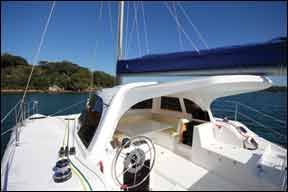
Construction is glass and foam, with vinyl-ester resins to protect against blisters. The cat arrives with a hull in each container; the remaining space is taken up by the center pod, cabin roof, cross beam, etc. (The hulls are fitted out with plumbing, timber trims, etc.) The mast and boom are packed together. The moderate-aspect mast is shorter than that of a typical, similar-sized cat so that it can fit in the container; the longer boom helps offset the loss of sail area.
The two hulls and center pod-which contains a monster forward, amidships, locker-are cleverly jointed using several bolts. The process would be impossible to carry out without machines. A forklift is essential, and Seawind even offers an assembly service.
There is nothing original about the deck or the interior layout. Halyards and reefing lines are led to the single helm station to starboard. Steering is a simple wheel, cable, and tiller crossbeam. Power is two 9.9 Yamaha outboards that lift when sailing. This system has been successfully used for decades with Seawinds 33-foot model.
The sail plan is basic: a main and a jib. To offer decent offwind performance, wed recommend either a multi-purpose sail or screecher, possibly with a bowsprit. This might mean increasing the winches up one size from the two Harken ST40s provided. Mooring cleats, anchor, and rode are standard, but there is no electric windlass.
Seawind offers two choices of interior. In Plan A, there are two double berths under the bridgedeck in each hull, with a toilet and shower aft in each hull. In Plan B, the toilet in one of the hulls is replaced with a third berth. Basic amenities-an LPG stove, icebox, saloon with drop down table (makes another big berth)-are standard. An LPG water heater is optional.
Conspicuously missing are AC shorepower, a fridge, and bigger batteries. (Two 110-amp-hour, 12-volt batteries are standard.) Other upgrades to consider would be an autopilot, a genset, a more ambitious galley stove (a two burner is standard) and, in colder climates, a rigid bulkhead wall at the cockpit. The current arrangement calls for a zipped canvas with isinglas curtains.
We have not yet test-sailed the boat (it debuted in the U.S. late last year), but we should get the opportunity early this spring. Based on the specs, we expect performance to be similar to that of the Seawind 1000, which was about average for a small cruising multihull.
The key selling point for the Seawind 950 is the ease of shipping, otherwise there is no logical reason to opt for it over a conventional one-piece cat. We certainly would not recommend this design for long offshore work. However, for a sailor who likes the idea of being able to comfortably sail corners of the earth that see few-if any-boats, the shoal-draft Seawind offers great potential for adventure.
Built in Vietnam, the Seawind 950 is priced at $220,000 delivered to the U.S. This is a little steep, in PSs opinion, for the boats limited creature comforts, but then again, it is a cat. It will be interesting to see how the public reacts to the concept.
